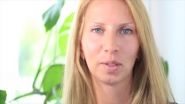INFORMATION:
Anthropogenic and Ecological Drivers of Amphibian Disease (Ranavirosis) by AC North, DJ Hodgson, SJ Price and AGF Griffiths is published in PLOS ONE: http://dx.plos.org/10.1371/journal. pone.0127037
The authors will be available for interview from Tuesday 2nd June
Images: https://www.dropbox.com/sh/nbxd6wo2r8g04yo/AABlvVIfqNznd9mgaswBjkPZa?dl=0
For further information contact:
University of Exeter Press Office
pressoffice@exeter.ac.uk
+44(0)1392 722 062
Twitter: @UoE_ScienceNews
For urgent enquiries outside normal office hours please ring +44(0)7867 536 750 or email pressoffice@exeter.ac.uk
About the University of Exeter
The University of Exeter is a Russell Group university and in the top one percent of institutions globally. It combines world-class research with very high levels of student satisfaction. Exeter has over 19,000 students and is ranked 7th in The Times and The Sunday Times Good University Guide league table, 11th in The Complete University Guide and 12th in the Guardian University Guide 2014. In the 2014 Research Excellence Framework (REF), the University ranked 16th nationally, with 98% of its research rated as being of international quality. Exeter was The Sunday Times University of the Year 2012-13.
The University has four campuses. The Streatham and St Luke's campuses are in Exeter and there are two campuses in Cornwall, Penryn and Truro. The 2014-2015 academic year marks the 10-year anniversary of the two Cornwall campuses. In a pioneering arrangement in the UK, the Penryn Campus is jointly owned and managed with Falmouth University. At the campus, University of Exeter students can study programmes in the following areas: Animal Behaviour, Conservation Biology and Ecology, English, Environmental Science, Evolutionary Biology, Geography, Geology, History, Human Sciences, Marine Biology, Mining and Minerals Engineering, Politics and International Relations, Renewable Energy and Zoology.
The University has invested strategically to deliver more than £350 million worth of new facilities across its campuses in the past few years; including landmark new student services centres - the Forum in Exeter and The Exchange at Penryn - together with world-class new facilities for Biosciences, the Business School and the Environment and Sustainability Institute. There are plans for another £330 million of investment between now and 2016.
http://www.exeter.ac.uk/cornwall
About the University of Exeter's Environment and Sustainability Institute (ESI)
The Environment and Sustainability Institute is a £30M interdisciplinary centre, based on the Penryn Campus, undertaking cutting-edge research into solutions to problems of environmental change; in so doing it is enhancing people's lives by improving their relationships with the environment. The ESI has three research themes: clean technologies, natural environment, and social science and sustainability. It is engaging with hundreds of businesses in Cornwall, the Isles of Scilly and beyond to translate its research and expertise across these themes into innovative business practice, products and services.
The ESI building has been designed to achieve a BREEAM 'Outstanding' status, the highest classification available under the BRE Environmental Assessment Method which is the leading and most widely used environmental assessment method for buildings
The ESI was formally opened in April 2013 and has been funded by the European Regional Development Fund Convergence Programme (£22.9M) and the South West Regional Development Agency (£6.6M), with significant support from the Higher Education Funding Council for England.
The University of Exeter and Falmouth University are founding partners in the Combined Universities in Cornwall (CUC), a unique collaboration between six universities and colleges to promote regional economic regeneration through Higher Education, funded mainly by the European Union (Objective One and Convergence), the South West Regional Development Agency and the Higher Education Funding Council for England, with support from Cornwall Council.
http://www.exeter.ac.uk/esi
Frogs face virus risk in garden ponds
Pond owners are being urged not to use garden chemicals, or to release goldfish into ponds, because of the risk they could pose to wild frogs
2015-06-03
(Press-News.org) Researchers from the University of Exeter found that the severity of ranavirosis, a devastating disease that kills thousands of frogs each year, increases in the presence of exotic fish. The use of garden chemicals was also associated with increased severity of the disease.
The study, which is published in the journal PLOS ONE, highlights the risks of releasing fish into garden ponds. Fish may amplify viral levels in the environment or cause stress hormone production that reduces immune function in wild frogs.
Lead author Alexandra North from the Environment and Sustainability Institute at the University of Exeter's Penryn Campus in Cornwall said: "Our results show that we can all help limit the impact of this devastating disease. It is important to reduce the use of garden chemicals like slug pellets and weed killers, which weaken the immune systems of frogs, and to stop stocking ponds with non-native species like goldfish. Crucially, people should not move fish, frog spawn, pond weeds or ornaments from one pond to another as this could spread the disease."
The researchers analysed a long term dataset of mortalities in the common frog from across Britain to identify which characteristics were associated with ranavirosis. Since 1992, UK pond owners have reported common frog mass mortality events to the charity Froglife which administers the dataset.
Ranavirus causes systemic haemorrhaging and severe skin ulcers in amphibians which can result in a loss of limbs, and often death. It is thought to have entered the UK via the pet trade and has contributed to the global decline in amphibians.
Dr Amber Griffiths from the Environment and Sustainability Institute at the University of Exeter's Penryn Campus in Cornwall said: "We are currently undergoing a mass extinction of species, and amphibians are particularly under threat. The unprecedented loss of amphibians indicates widespread environmental degradation. The interactions between disease and climate change are deadly. The deeper problem is climate change, but our study shows that people can make an immediate difference by changing their habits in their own gardens".
The study highlights links between disease severity, pond characteristics and garden practices which demonstrate the potential for garden owners to take simple precautions that will help to reduce ranavirosis incidence and severity in the wild across Britain.
ELSE PRESS RELEASES FROM THIS DATE:
Lower birth weight associated with proximity of mother's home to gas wells
2015-06-03
PITTSBURGH, June 3, 2015 - Pregnant women living close to a high density of natural gas wells drilled with hydraulic fracturing were more likely to have babies with lower birth weights than women living farther from such wells, according to a University of Pittsburgh Graduate School of Public Health analysis of southwestern Pennsylvania birth records.
The finding does not prove that the proximity to the wells caused the lower birth weights, but it is a concerning association that warrants further investigation, the researchers concluded. The study was funded by The Heinz ...
High levels of moral reasoning correspond with increased gray matter in brain
2015-06-03
PHILADELPHIA - Individuals with a higher level of moral reasoning skills showed increased gray matter in the areas of the brain implicated in complex social behavior, decision making, and conflict processing as compared to subjects at a lower level of moral reasoning, according to new research from the Perelman School of Medicine and the Wharton School of the University of Pennsylvania in collaboration with a researcher from Charité Universitätsmediz in Berlin, Germany. The team studied students in the Masters of Business Administration (MBA) program at the Wharton ...
Study pinpoints what part genes play in the age of first-time mums and family size
2015-06-03
Researchers have analysed the genomes of thousands of women in the UK and the Netherlands to measure the extent to which a woman's genes play a role for when she has her first baby and how many children she will have. Significantly, they have found that some women are genetically predisposed to have children earlier than others, and conclude that they have passed down their reproductive advantage to the next generation. They also find, however, that while modern women who were born in the 20th century might be expected to have babies even earlier than previous generations ...
Scientist at LIMR leads study demonstrating drug-induced tissue regeneration
2015-06-03
WYNNEWOOD, PA--June 3, 2015--a study led by Ellen Heber-Katz, PhD, of the Lankenau Institute for Medical Research (LIMR), part of Main Line Health (MLH), shows that a primordial form of energy production that still exists in mammals can be harnessed to achieve spontaneous tissue regeneration in mice, without the need for added stem cells. The study findings were reported in the June 3, 2015, issue of Science Translational Medicine, a peer-reviewed journal of the American Association for the Advancement of Science. Key collaborators in the study, which was supported by grants ...
How to cut a vortex into slices
2015-06-03
A lot of problems, associated with the mixing of the liquid in the microchannels, could be solved via proper organization of the inhomogeneous slip on the walls of these channels. This is the conclusion made by the joint group of Russian and German scientists lead by Olga Vinogradova, who is a professor at the M.V. Lomonosov Moscow State University and also a head of laboratory at the A.N. Frumkin Institute of Physical chemistry and Electrochemistry of the Russian Academy of Sciences. The article describing their theory was published in the latest issue of the journal ...
Genetic variation of stress hormone receptor may affect vulnerability to major depression
2015-06-03
Scientists are beginning to unwrap the biology behind why some people are more prone to major depression and other psychiatric disorders than others when experiencing stressful life events. The researchers found that cellular activity in response to stress hormone receptor activation differs from individual to individual. The study, led by Janine Arloth, Ryan Bogdan, and Elisabeth Binder at the Max Planck Institute of Psychiatry in Germany, also shows that the genetic variations underlying this difference in stress response correlate with dysfunction in the amygdala, a ...
Researchers find speedometer in the brain
2015-06-03
This news release is available in German. Scientists at the German Center for Neurodegenerative Diseases (DZNE) and the University of Bonn led by Prof. Stefan Remy report on this in the journal "Neuron". Their investigations give new insights into the workings of spatial memory. Furthermore, they could also help improve our understanding of movement related symptoms associated with Parkinson's disease.
In a familiar environment our movements are purposeful. For example, if we leave our office desk for a coffee break, we naturally follow a predefined route that has ...
Eukaryotes: A new timetable of evolution
2015-06-03
This news release is available in German.
Contaminated samples have evidently created some confusion in the timetable of life. On the basis of ultra-clean analyses, an international team, including scientists from the Max Planck Institute for Biogeochemistry, has disproved supposed evidence that eukaryotes originated 2.5 to 2.8 billion years ago. In contrast to prokaryotes such as bacteria, eukaryotes have a nucleus. Some researchers thought they had discovered molecular remnants of living organisms in rock samples up to 2.8 billion years old. However, as the ...
Long-term memory formation
2015-06-03
A team of New York University neuroscientists has determined how a pair of growth factor molecules contributes to long-term memory formation, a finding that appears in the journal Neuron.
"These results give us a better understanding of memory's architecture and, specifically, how molecules act as a network in creating long-term memories," explains the paper's senior author, Thomas Carew, a professor in NYU's Center for Neural Science and dean of NYU's Faculty of Arts and Science. "More importantly, this marks another step toward elucidating the intricacies of memory ...
MRI technology reveals deep brain pathways in unprecedented detail
2015-06-03
DURHAM, N.C. - Scientists at Duke Medicine have produced a 3-D map of the human brain stem at an unprecedented level of detail using MRI technology.
In a study to be published June 3 in Human Brain Mapping, the researchers unveil an ultra high-resolution brain stem model that could better guide brain surgeons treating conditions such as tremors and Parkinson's disease with deep brain stimulation (DBS).
The new 3-D model could eliminate risky trial-and-error as surgeons implant electrodes -- a change akin to trading an outdated paper road atlas for a real-time GPS.
"On ...
LAST 30 PRESS RELEASES:
Decoupling the HOR enhancement on PtRu: Dynamically matching interfacial water to reaction coordinates
Sulfur isn’t poisonous when it synergistically acts with phosphine in olefins hydroformylation
URI researchers uncover molecular mechanisms behind speciation in corals
Chitin based carbon aerogel offers a cleaner way to store thermal energy
Tracing hidden sources of nitrate pollution in rapidly changing rural urban landscapes
Viruses on plastic pollution may quietly accelerate the spread of antibiotic resistance
Three UH Rainbow Babies & Children’s faculty elected to prestigious American Pediatric Society
Tunnel resilience models unveiled to aid post-earthquake recovery
Satellite communication systems: the future of 5G/6G connectivity
Space computing power networks: a new frontier for satellite technologies
Experiments advance potential of protein that makes hydrogen sulfide as a therapeutic target for Alzheimer’s disease
Examining private equity’s role in fertility care
Current Molecular Pharmacology achieves a landmark: real-time CiteScore advances to 7.2
Skeletal muscle epigenetic clocks developed using postmortem tissue from an Asian population
Estimating unemployment rates with social media data
Climate policies can backfire by eroding “green” values, study finds
Too much screen time too soon? A*STAR study links infant screen exposure to brain changes and teen anxiety
Global psychiatry mourns Professor Dan Stein, visionary who transformed mental health science across Africa and beyond
KIST develops eco-friendly palladium recovery technology to safeguard resource security
Statins significantly reduce mortality risk for adults with diabetes, regardless of cardiovascular risk
Brain immune cells may drive more damage in females than males with Alzheimer’s
Evidence-based recommendations empower clinicians to manage epilepsy in pregnancy
Fungus turns bark beetles’ defenses against them
There are new antivirals being tested for herpesviruses. Scientists now know how they work
CDI scientist, colleagues author review of global burden of fungus Candida auris
How does stroke influence speech comprehension?
B cells transiently unlock their plasticity, risking lymphoma development
Advanced AI dodel predicts spoken language outcomes in deaf children after cochlear implants
Multimodal imaging-based cerebral blood flow prediction model development in simulated microgravity
Accelerated streaming subgraph matching framework is faster, more robust, and scalable
[Press-News.org] Frogs face virus risk in garden pondsPond owners are being urged not to use garden chemicals, or to release goldfish into ponds, because of the risk they could pose to wild frogs




